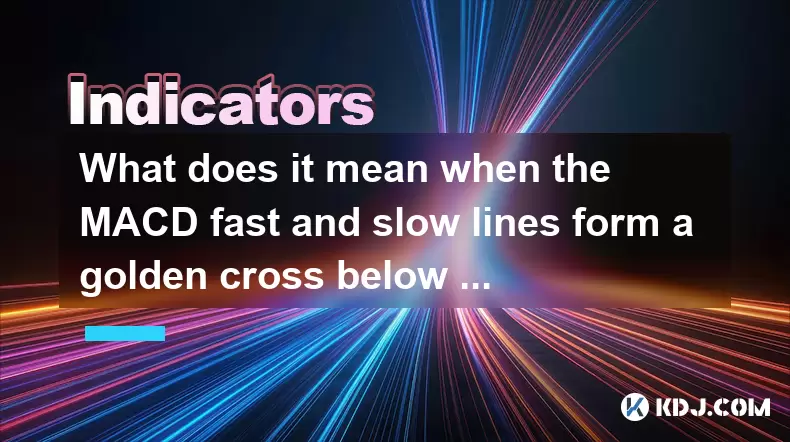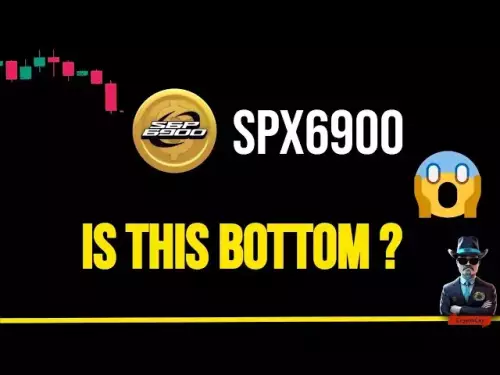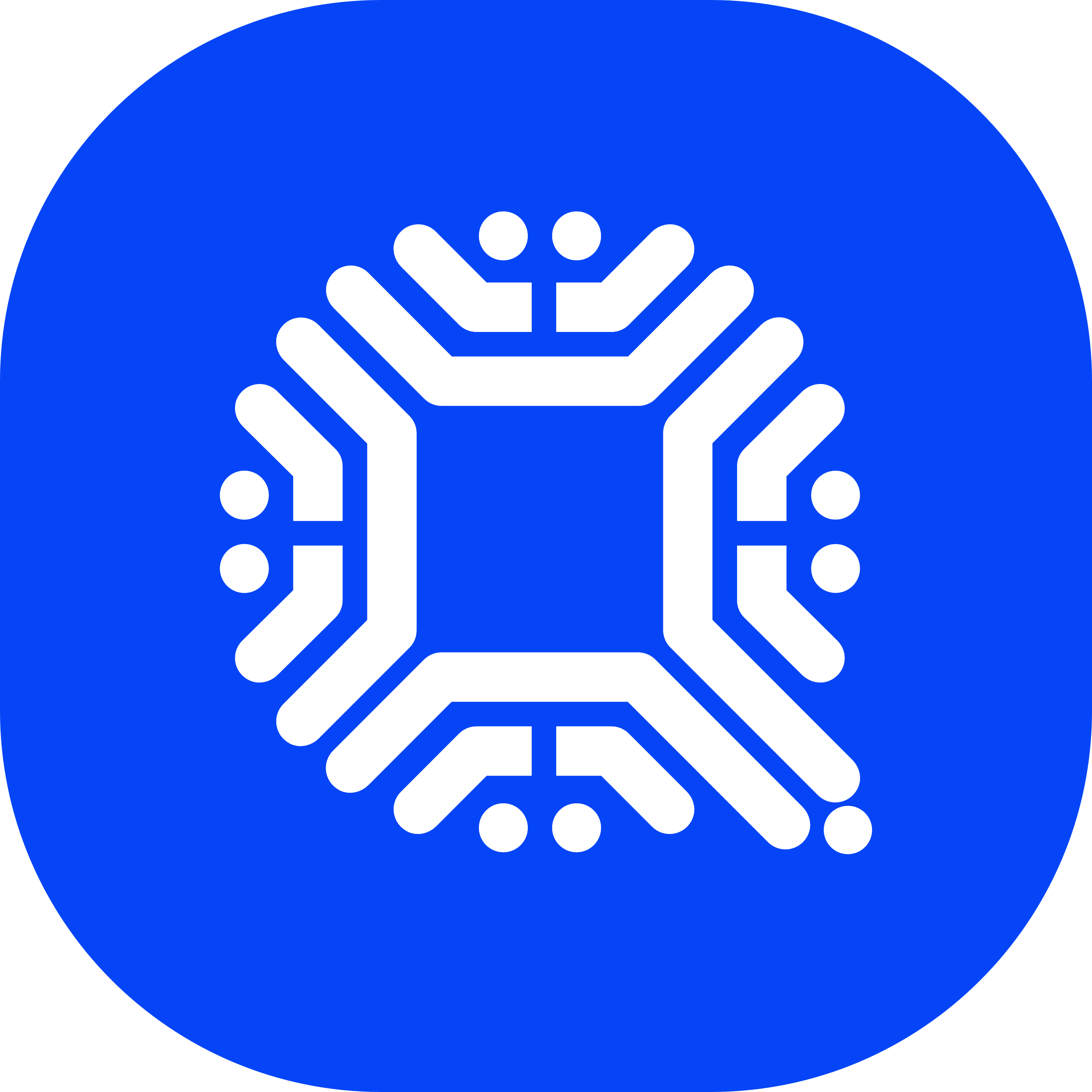-
 Bitcoin
Bitcoin $114600
-0.43% -
 Ethereum
Ethereum $4933
3.82% -
 XRP
XRP $3.108
2.91% -
 Tether USDt
Tether USDt $0.9999
0.03% -
 BNB
BNB $880.4
-0.16% -
 Solana
Solana $211.3
3.62% -
 USDC
USDC $0.0000
0.01% -
 Dogecoin
Dogecoin $0.2412
1.81% -
 TRON
TRON $0.3679
1.80% -
 Cardano
Cardano $0.9431
3.38% -
 Chainlink
Chainlink $26.41
1.18% -
 Hyperliquid
Hyperliquid $46.23
3.93% -
 Sui
Sui $3.791
2.41% -
 Stellar
Stellar $0.4209
1.60% -
 Ethena USDe
Ethena USDe $1.000
0.01% -
 Bitcoin Cash
Bitcoin Cash $597.9
1.86% -
 Avalanche
Avalanche $26.46
2.90% -
 Hedera
Hedera $0.2565
2.52% -
 Litecoin
Litecoin $123.6
2.35% -
 UNUS SED LEO
UNUS SED LEO $9.595
0.49% -
 Toncoin
Toncoin $3.386
0.53% -
 Shiba Inu
Shiba Inu $0.00001336
1.10% -
 Uniswap
Uniswap $11.39
0.93% -
 Polkadot
Polkadot $4.253
2.32% -
 Aave
Aave $357.1
1.31% -
 Cronos
Cronos $0.1614
3.13% -
 Bitget Token
Bitget Token $4.730
0.79% -
 Dai
Dai $0.9999
-0.01% -
 Monero
Monero $283.1
6.99% -
 Pepe
Pepe $0.00001137
0.81%
What does it mean when the MACD fast and slow lines form a golden cross below zero for the second time?
A second MACD golden cross below zero in crypto may signal strengthening bullish momentum after a retest, often hinting at a potential trend reversal when confirmed by price and volume.
Aug 10, 2025 at 05:50 am

Understanding the MACD Indicator in Cryptocurrency Trading
The Moving Average Convergence Divergence (MACD) is a momentum-based technical indicator widely used in cryptocurrency trading to identify potential trend reversals, momentum shifts, and entry or exit points. It consists of three components: the MACD line, the signal line, and the histogram. The MACD line is calculated by subtracting the 26-period Exponential Moving Average (EMA) from the 12-period EMA. The signal line is typically a 9-period EMA of the MACD line. When the MACD line crosses above the signal line, it forms what is known as a golden cross.
In the context of cryptocurrency markets, which are highly volatile and sentiment-driven, the MACD provides traders with visual cues about the strength and direction of price momentum. A golden cross below zero suggests that bullish momentum is emerging after a prolonged bearish phase, but the overall market sentiment may still be negative since the MACD is still in negative territory. When this golden cross occurs for the second time below zero, it may carry additional significance, indicating a possible reinforcement of a bottoming pattern.
What Happens During a Golden Cross Below Zero?
A golden cross below zero occurs when the MACD line rises from deeply negative values and crosses above the signal line, while both lines remain under the zero axis. This scenario typically unfolds after a sustained downtrend in a cryptocurrency’s price, such as Bitcoin or Ethereum. The fact that the cross happens below zero means that although short-term momentum is improving, the longer-term trend has not yet turned bullish.
- The MACD line crossing above the signal line indicates increasing upward momentum.
- The position below zero confirms that the broader trend is still bearish.
- The second occurrence of this cross may suggest that sellers are losing control after retesting previous lows.
Traders interpret this as a potential sign of accumulation—smart money may be entering the market after the asset has been oversold. The second golden cross could reflect a double bottom formation on the price chart, where the market finds support at a similar level twice, and each time the downward momentum weakens.
Interpreting the Second Golden Cross Below Zero
When the MACD forms a golden cross below zero for the second time, it often signals a deeper level of market structure change. The first golden cross may have been a false signal or a short-lived relief rally. However, the second cross suggests that bullish pressure is building again after a retest of the prior low, indicating stronger conviction among buyers.
- Price may have formed a double bottom, reinforcing the support level.
- Volume patterns during the second cross can validate the strength of the move—rising volume on the second cross adds credibility.
- Divergence between price and MACD may be present: if the price makes a lower low but the MACD makes a higher low, this is a bullish divergence, further supporting the potential reversal.
This repeated formation below zero is particularly relevant in bear markets or correction phases within a larger downtrend. It warns traders that while the asset is not yet in a confirmed uptrend, the balance of power may be shifting from sellers to buyers.
How to Trade the Second Golden Cross Below Zero
Executing a trade based on the second golden cross below zero requires careful analysis and risk management. This signal alone is not sufficient to enter a long position; it should be confirmed with other technical tools.
- Wait for the price to break above a key resistance level near the neckline of a double bottom pattern.
- Confirm with volume: ensure that trading volume increases as the MACD crosses and the price begins to rise.
- Use additional indicators such as the Relative Strength Index (RSI) to check for oversold conditions or bullish divergence.
- Set a stop-loss below the most recent swing low to protect against a breakdown.
- Enter a partial position at the breakout, then add more if the price sustains momentum above the zero line later.
For example, if Ethereum drops to $1,500, rebounds to $1,800, falls back to $1,520, and then forms a second golden cross on the daily MACD below zero, a trader might watch for a close above $1,850 as confirmation. The MACD crossing above zero after this point would further validate the trend shift.
Common Misinterpretations and Risks
While the second golden cross below zero can be a powerful signal, it is not foolproof. Cryptocurrency markets are prone to whipsaws, fakeouts, and sudden macroeconomic shocks that can invalidate technical patterns.
- A golden cross in low volume conditions may lack follow-through.
- If the broader market remains bearish (e.g., Bitcoin in a downtrend), altcoins may struggle to sustain rallies despite positive MACD signals.
- Over-reliance on MACD alone can lead to premature entries. Always correlate with price action and support/resistance levels.
Moreover, the MACD is a lagging indicator—it reacts to price changes rather than predicting them. Therefore, waiting for confirmation candles or break of structure is essential. A second golden cross that fails to push the MACD above zero may result in a bearish trap, where traders enter longs only to see the price collapse again.
Real-World Example in a Crypto Chart
Consider Bitcoin’s price action in late 2022. After dropping from $30,000 to $16,000, BTC formed a bottom near $15,500. The MACD generated a golden cross below zero in November 2022. Price rallied to $18,000, then corrected back to $16,000 in December. During this retest, the MACD formed a second golden cross below zero in early January 2023.
- The second cross occurred with higher MACD lows, indicating strengthening momentum.
- Price soon broke above $18,500, confirming the pattern.
- The MACD eventually crossed above zero, marking the start of a new uptrend.
This example illustrates how the second golden cross below zero served as a high-probability signal when combined with structural confirmation.
Frequently Asked Questions
What is the difference between a golden cross above zero and one below zero?
A golden cross above zero occurs in positive MACD territory, indicating strong bullish momentum within an ongoing uptrend. In contrast, a golden cross below zero happens during a recovery from a downtrend and suggests early-stage bullish momentum, but the overall trend is still bearish until the MACD moves above zero.
Can the second golden cross below zero occur on different timeframes?
Yes. This pattern can appear on 1-hour, 4-hour, daily, or weekly charts. Traders often look for confluence across multiple timeframes. For instance, a second golden cross on both the 4-hour and daily charts increases the signal’s reliability.
Does the MACD histogram provide additional insight during the second golden cross?
Absolutely. The histogram represents the distance between the MACD line and signal line. During the second golden cross, if the histogram bars are increasing in height (becoming less negative or turning positive), it confirms strengthening bullish momentum. Shrinking bars may suggest weak follow-through.
Should I exit the trade if the MACD lines cross back below zero after the second golden cross?
If the MACD lines reverse and cross back below the signal line after the second golden cross, it may indicate a failed reversal. This is a warning sign. Traders often use this as a cue to tighten stop-losses or exit partial positions, especially if price fails to make higher highs.
Disclaimer:info@kdj.com
The information provided is not trading advice. kdj.com does not assume any responsibility for any investments made based on the information provided in this article. Cryptocurrencies are highly volatile and it is highly recommended that you invest with caution after thorough research!
If you believe that the content used on this website infringes your copyright, please contact us immediately (info@kdj.com) and we will delete it promptly.
- Rare Find: The 1-Cent Coin Worth €6,000!
- 2025-08-25 02:45:28
- Hacktivism, Tokenization, and the Decentralized Future: A New Yorker's Take
- 2025-08-25 02:45:28
- UNI Price Gears Up for New Cycle: Analyst Outlook Bullish
- 2025-08-25 02:50:11
- BlockchainFX, Polkadot, Stellar: Unveiling 2025's Crypto Opportunities
- 2025-08-25 03:25:27
- Pi Coin Price Patterns: Decoding the Hype and Reality
- 2025-08-25 03:30:12
- Pepe Crypto: Price Predictions and Long-Term Investment Potential - A NYC Perspective
- 2025-08-25 03:05:12
Related knowledge

What does it mean when the +DI and -DI cross frequently in the DMI indicator but the ADX is flattening?
Aug 11,2025 at 03:15am
Understanding the DMI Indicator ComponentsThe Directional Movement Index (DMI) is a technical analysis tool composed of three lines: the +DI (Positive...

What does the sudden appearance of a "dark cloud cover" candlestick pattern during an uptrend indicate?
Aug 13,2025 at 11:35am
Understanding the 'Dark Cloud Cover' Candlestick PatternThe dark cloud cover is a bearish reversal pattern in technical analysis that typically appear...

What does it mean when the moving average, MACD, and RSI all send buy signals simultaneously?
Aug 11,2025 at 01:42pm
Understanding the Convergence of Technical IndicatorsWhen the moving average, MACD, and RSI all generate buy signals at the same time, traders interpr...

What does it mean when both the KDJ indicator and the RSI show overbought signals simultaneously?
Aug 13,2025 at 11:35am
Understanding the KDJ Indicator in Cryptocurrency TradingThe KDJ indicator is a momentum oscillator derived from the Stochastic Oscillator, widely use...

What does it mean when the price is trading above the SAR indicator but the red dots are densely packed?
Aug 09,2025 at 11:49pm
Understanding the SAR Indicator and Its Visual SignalsThe SAR (Parabolic Stop and Reverse) indicator is a technical analysis tool used primarily to de...

What does it mean when the candlestick chart forms a "Morning Star" but trading volume is sluggish?
Aug 12,2025 at 06:28pm
Understanding the Morning Star Candlestick PatternThe Morning Star is a three-candle bullish reversal pattern commonly observed in cryptocurrency pric...

What does it mean when the +DI and -DI cross frequently in the DMI indicator but the ADX is flattening?
Aug 11,2025 at 03:15am
Understanding the DMI Indicator ComponentsThe Directional Movement Index (DMI) is a technical analysis tool composed of three lines: the +DI (Positive...

What does the sudden appearance of a "dark cloud cover" candlestick pattern during an uptrend indicate?
Aug 13,2025 at 11:35am
Understanding the 'Dark Cloud Cover' Candlestick PatternThe dark cloud cover is a bearish reversal pattern in technical analysis that typically appear...

What does it mean when the moving average, MACD, and RSI all send buy signals simultaneously?
Aug 11,2025 at 01:42pm
Understanding the Convergence of Technical IndicatorsWhen the moving average, MACD, and RSI all generate buy signals at the same time, traders interpr...

What does it mean when both the KDJ indicator and the RSI show overbought signals simultaneously?
Aug 13,2025 at 11:35am
Understanding the KDJ Indicator in Cryptocurrency TradingThe KDJ indicator is a momentum oscillator derived from the Stochastic Oscillator, widely use...

What does it mean when the price is trading above the SAR indicator but the red dots are densely packed?
Aug 09,2025 at 11:49pm
Understanding the SAR Indicator and Its Visual SignalsThe SAR (Parabolic Stop and Reverse) indicator is a technical analysis tool used primarily to de...

What does it mean when the candlestick chart forms a "Morning Star" but trading volume is sluggish?
Aug 12,2025 at 06:28pm
Understanding the Morning Star Candlestick PatternThe Morning Star is a three-candle bullish reversal pattern commonly observed in cryptocurrency pric...
See all articles

























































































